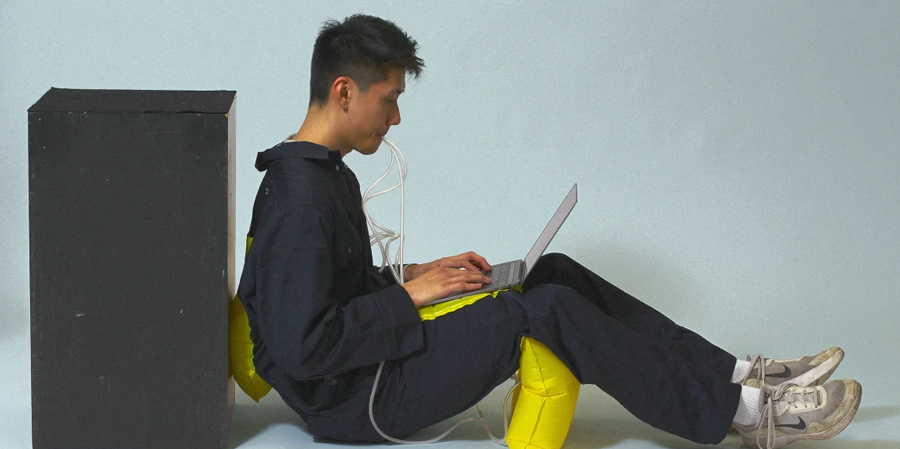With apologies to business attire, working from home has cemented a fashion of athleisure and nap dresses. We live in an era of comfort-first clothing, which prioritizes how we do our jobs rather than what we look like while working.
But when Wei Lun Hung, a product design student at the Royal College of Art, was examining work-from-home fashion, he realized something: None of this clothing is actually designed for work, let alone modern work. And in response, he says, “I just jumped straight into making.” What he created is a collection of three highly experimental garments that he’s dubbed Wearable Workforce.
“Current work clothes are designed to restrain the body and give some sense of professionalism,” Hung says. But his designs are meant to question and provoke, not just what we wear to work but the evolving nature of work itself: Where we do it, how we do it, and what it means for our way of living.
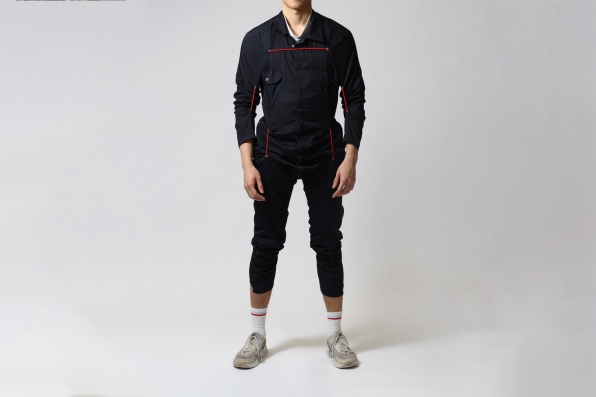
The first garment is called Commuter. It was inspired by the fact that many of us no longer have to drive or take the subway into work. As pesky as commutes are, they also serve as a liminal space—an in-between or transition place where we can shift our mind from one state to another.
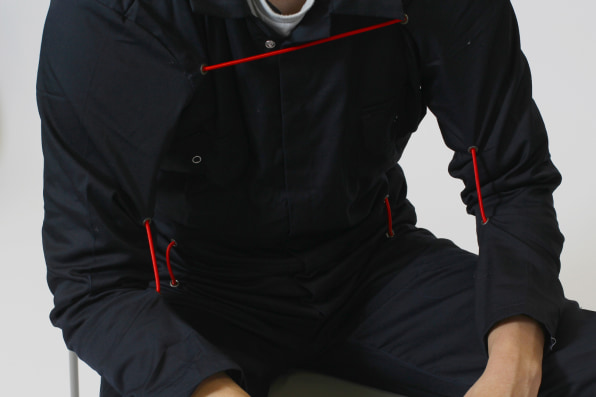
Commuter sews your transition to work, right into the garment itself. It’s a jumpsuit that’s threaded with bungee cords. From the moment you get dressed, their elasticity pulls your body into the hunched posture of working on your computer, signaling to your muscles that it’s time to go to work.
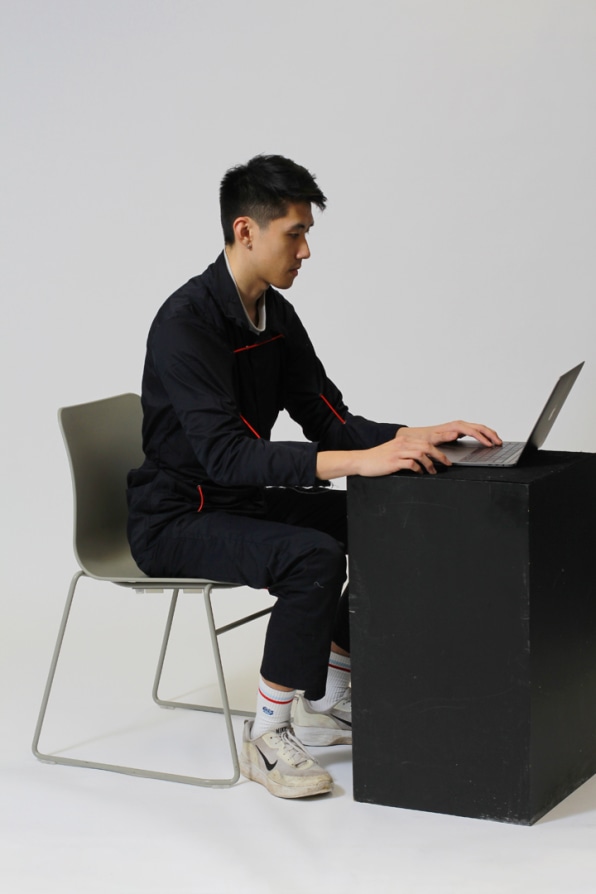
The garment isn’t intended to be comfortable, or even healthy. In fact, it’s sharply dystopian. “It’s about . . . being critical of office labor,” Hung says. “The office worker is not aware of this posture when they’re working on a laptop, and it’s actually quite bad for the body.” In a sense, we are all wearing the Commuter to work each day (even at our home desks, we bend over our laptops) whether we realize it or not.
The second garment is called Self-Manager. Loaded with inflatable pads on the back, thighs, and hamstrings, it’s built not to restrain you into laptop posture like the Commuter but to enable you to take control of your own ergonomics. With its inflatable pads, whatever chair, floor, or couch you’re sitting on becomes more supportive.
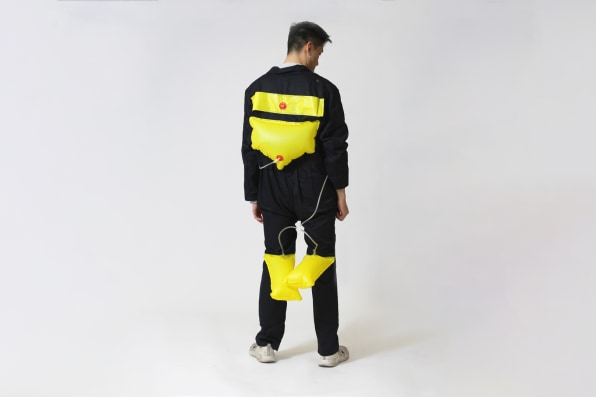
“You have to achieve physical comfort, but not make yourself too comfortable because you lose that alert [feeling]of being in a professional setting,” Hung explains. That’s the idea of self-management embodied in this piece. How do you support your body without falling asleep? You literally use your own breath to inflate the clothing into a posture that’s right for you. To build the outfit, Hung painstakingly soldered plastic fabric together at the seams, using a layer of baking paper to stop if from burning.
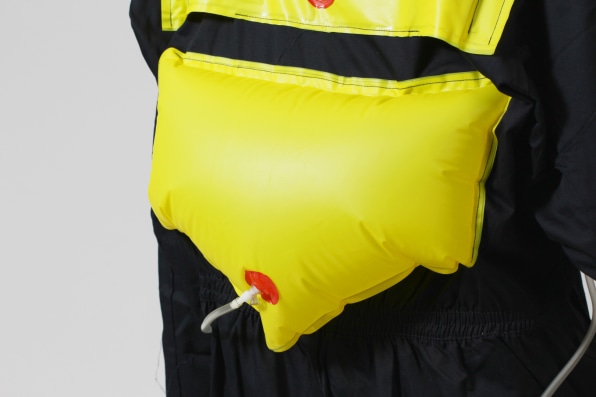
“It was quite a painful process to make sure it was completely tight with no leak,” he says with a laugh.
Following Self-Manager, Hung developed his third garment, which is the closest he comes to offering a practical vision for the future of work. He calls this one Itinerants. It’s literally a computer that you wear anywhere and everywhere you go.
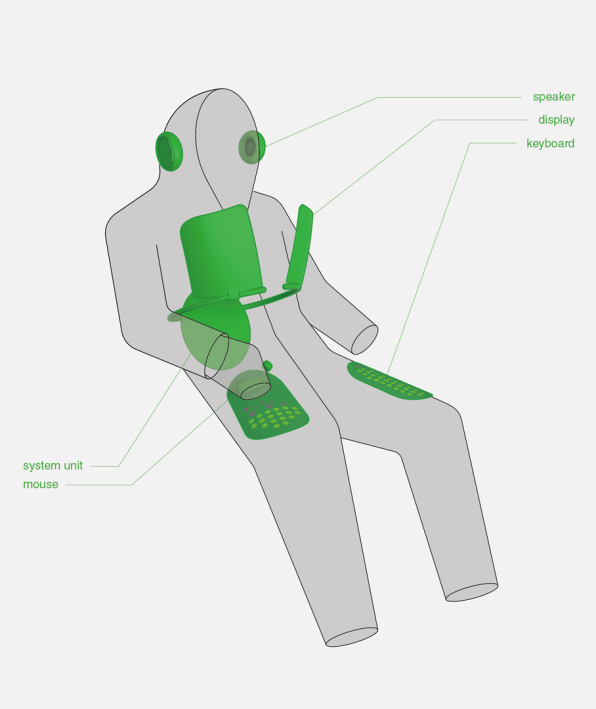
“I created this speculative scenario—based on reality—where big corporations closed their physical offices and adopted a flexible work schedule,” Hung says. “I was picturing this really dynamic mobile working pattern [in which]the office dissolves into the city and we become really nomadic workers.”
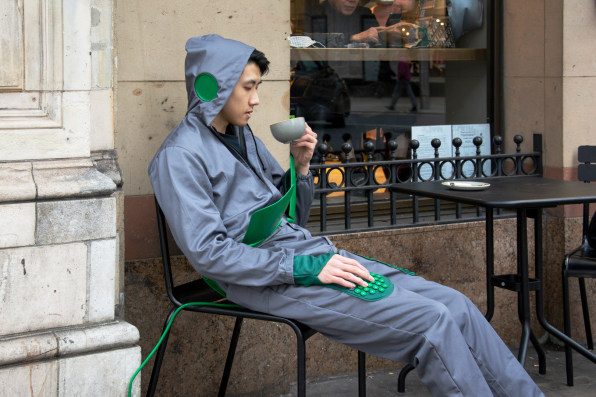
For this task, Hung created what’s more or less a deconstructed laptop that’s sewn into your clothing—a vision that he intended to feel liberating, even if it means you take your work wherever you go. He traveled around London wearing the prototype (it’s not a real working computer, by the way) to examine how it fit into his life. The main computer sits on one’s back, wrapping around the torso with two monitors. A split keyboard, complete with a thumb-controllable mouse, sits on the tops of one’s legs. And headphones are sewn right into the hoodie. Whether Hung is sitting in a café chair or against a tree, the system seems to wrap perfectly around him.
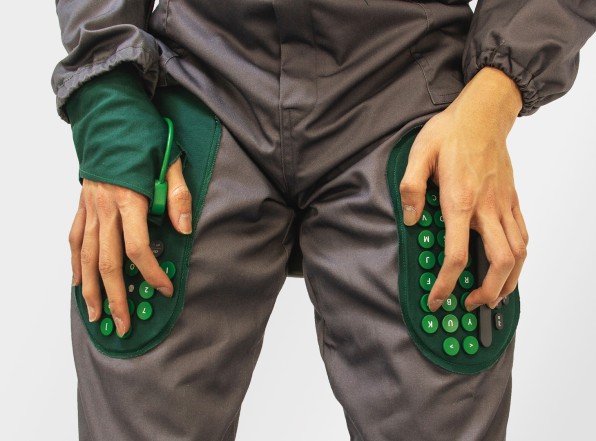
However, “ergonomics isn’t the point,” Hung says. “It’s about this shift: When there’s no communal office space, you don’t have to present yourself to other people. . . . The hoodie is almost like pajamas. It’s about being comfortable and self-centered.” And, sure, not throwing out your back in the process, either.
…
This article first appeared in www.fastcompany.com
Seeking to build and grow your brand using the force of consumer insight, strategic foresight, creative disruption and technology prowess? Talk to us at +971 50 6254340 or mail: engage@groupisd.com or visit www.groupisd.com/story

